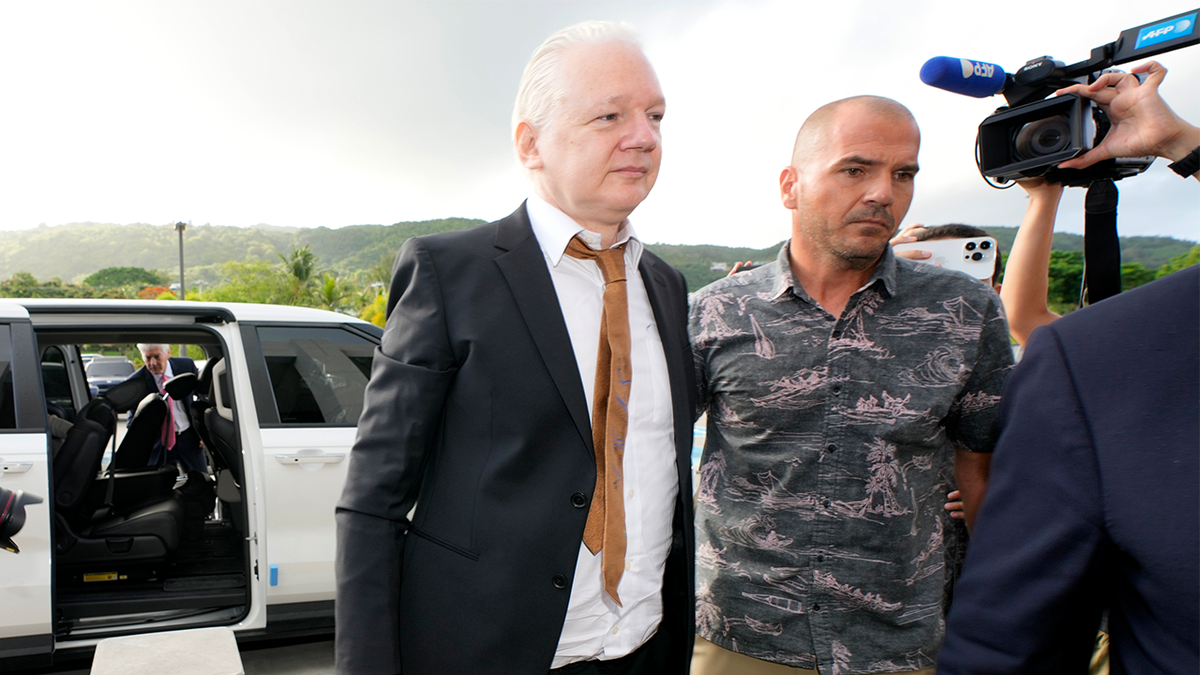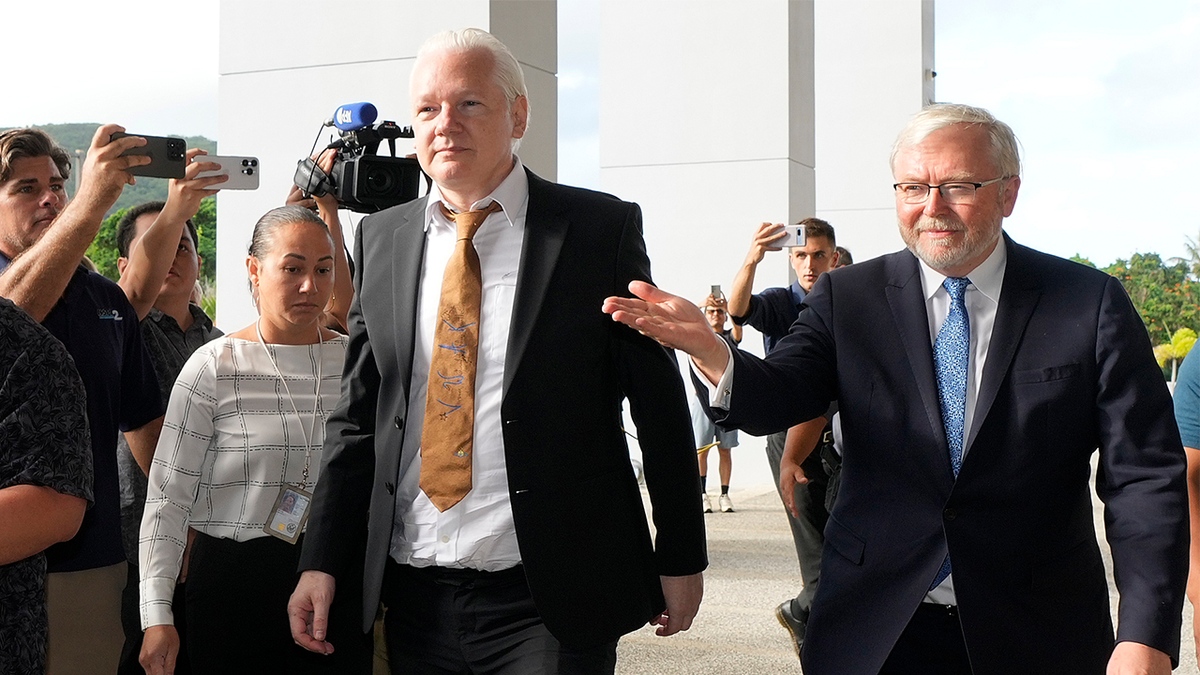Assange, an Australian publisher, entered the guilty plea Wednesday morning in federal court in Saipan, the capital of the Northern Mariana Islands, a U.S. commonwealth in the Pacific. The sentence was imposed by U.S. District Judge Ramona Manglona.
The plea in the commonwealth accommodated Assange’s wish to avoid the continental U.S. The deal was first disclosed Monday night in a letter from the Justice Department.
Assange arrived in court after flying from Britain – where he had been imprisoned – on a charter plane accompanied by members of his legal team and Australian officials.
Before his plea deal, Assange, 52, was facing 17 counts under the Espionage Act for allegedly receiving, possessing and communicating classified information to the public, as well as one charge alleging conspiracy to commit computer intrusion. By reaching a plea deal, he now avoids the potential of spending up to 175 years in an American maximum security prison.

WikiLeaks founder Julian Assange (left) is escorted as he arrives at the U.S. courthouse to enter a plea deal in the Saipan, Mariana Islands, on Wednesday. (AP)
This comes after years of Assange trying to avoid being extradited from the U.K. to the U.S. to face charges for publishing classified U.S. military documents leaked to him by a source.
The plea deal required Assange to admit guilt to a single felony count but allowed him to avoid prison time in the U.S. and return home to his family in Australia. Assange’s release was welcomed by his family and supporters, but concerns about press freedom were still raised since he was forced to admit guilt for journalistic activities.

WikiLeaks founder Julian Assange was the first journalist to be charged under the Espionage Act. (AP)
President Obama also commuted Manning’s 35-year sentence for violations of the Espionage Act and other offenses to seven years in January 2017, and Manning, who had been imprisoned since 2010, was released later that year.
The Associated Press contributed to this report.
\
[ad_2]

